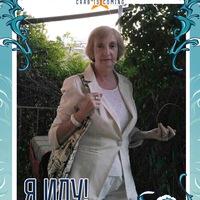#existential_monday@senbossya
В ночь Святого Валентина можно будет наблюдать за астероидом, который относится к классу Near Earth Asteroids (небесные тела, двигающиеся в опасной близости от Земли). NASA
По состоянию на 5 февраля 2019 года NASA обнаружила почти 20 000 NEA, из них примерно 1 000 имеют размер больше 1 км и их называют потенциальным источником катаклизма.
Вестник Апокалипсиса - астероид Bennu, чьё появление ожидается в ночь на 14 февраля, является вторым февральским NEA этого года, после астероида CB-2, который пролетел в опасной близости от Земли в ночь на 10 февраля. По расчётам астрономов NASA столкновение Земли с астероидом Benu до 2196 года маловероятно (вероятность столкновения в 2196 составляет 0,01%). До этого времени астероид будет пролетать мимо нашей планеты ещё 79 раз. Впервые он может столкнуться с Землёй в 2175 году, однако вероятность столкновения оценивают в 0,004%. Возраст астероида Bennu оценивают в 4,5 млрд лет. NASA планирует провести миссию по отработке посадки на астероид Bennu, с помощью корабля Osiris-REx. В декабре 2018 года уже была проведена успешная миссия по сближению Osiris-REx и астероида Bennu, так мы получили снимки удивительно круглого астероида с пористой поверхностью. По плану NASA к 2022 году будет осуществлена посадка на астероид и забор проб.
Агентство запустило сервис: Sentry, с помощью которого каждый может посмотреть все NEA найденные астрономами, вероятность их столкновения с Землёй и оценку размера. Benny является 2-м NEA по степени опасности. На 1м месте - астероид 29075 с 0,012% вероятностью столкнуться с Землёй в 2880 году. Оценки вероятности столкновения NEA с Землёй постоянно корректируются NASA. Так уже было с астероидом Апофис. Первоначальные оценки предсказывали 2,7% вероятность столкновения Земли с астероидом в 2029 году и делали его самым опасным кандидатом на вестника Армагеддона, однако, позднее оценки скорректировали и сейчас Апофис на 5-м месте.
https://cneos.jpl.nasa.gov/sentry/
В ночь Святого Валентина можно будет наблюдать за астероидом, который относится к классу Near Earth Asteroids (небесные тела, двигающиеся в опасной близости от Земли). NASA
По состоянию на 5 февраля 2019 года NASA обнаружила почти 20 000 NEA, из них примерно 1 000 имеют размер больше 1 км и их называют потенциальным источником катаклизма.
Вестник Апокалипсиса - астероид Bennu, чьё появление ожидается в ночь на 14 февраля, является вторым февральским NEA этого года, после астероида CB-2, который пролетел в опасной близости от Земли в ночь на 10 февраля. По расчётам астрономов NASA столкновение Земли с астероидом Benu до 2196 года маловероятно (вероятность столкновения в 2196 составляет 0,01%). До этого времени астероид будет пролетать мимо нашей планеты ещё 79 раз. Впервые он может столкнуться с Землёй в 2175 году, однако вероятность столкновения оценивают в 0,004%. Возраст астероида Bennu оценивают в 4,5 млрд лет. NASA планирует провести миссию по отработке посадки на астероид Bennu, с помощью корабля Osiris-REx. В декабре 2018 года уже была проведена успешная миссия по сближению Osiris-REx и астероида Bennu, так мы получили снимки удивительно круглого астероида с пористой поверхностью. По плану NASA к 2022 году будет осуществлена посадка на астероид и забор проб.
Агентство запустило сервис: Sentry, с помощью которого каждый может посмотреть все NEA найденные астрономами, вероятность их столкновения с Землёй и оценку размера. Benny является 2-м NEA по степени опасности. На 1м месте - астероид 29075 с 0,012% вероятностью столкнуться с Землёй в 2880 году. Оценки вероятности столкновения NEA с Землёй постоянно корректируются NASA. Так уже было с астероидом Апофис. Первоначальные оценки предсказывали 2,7% вероятность столкновения Земли с астероидом в 2029 году и делали его самым опасным кандидатом на вестника Армагеддона, однако, позднее оценки скорректировали и сейчас Апофис на 5-м месте.
https://cneos.jpl.nasa.gov/sentry/
# existential_monday @ senbossya
On Valentine's night, it will be possible to observe an asteroid that belongs to the class Near Earth Asteroids (celestial bodies moving dangerously close to the Earth). NASA
As of February 5, 2019, NASA has detected nearly 20,000 NEAs, of which approximately 1,000 are larger than 1 km and are called a potential source of disaster.
The Herald of the Apocalypse - Bennu asteroid, whose appearance is expected on the night of February 14, is the second February NEA of this year, after the asteroid CB-2, which flew dangerously close to Earth on the night of February 10. According to NASA astronomers, a collision of the Earth with the Benu asteroid is unlikely until 2196 (the probability of a collision in 2196 is 0.01%). Until this time, the asteroid will fly past our planet another 79 times. For the first time he can collide with the Earth in 2175, but the probability of collision is estimated at 0.004%. The age of the asteroid Bennu is estimated at 4.5 billion years. NASA plans to conduct a mission to test the landing on the asteroid Bennu, using the ship Osiris-REx. In December 2018, a successful mission to bring together Osiris-REx and Bennu asteroid was already carried out, so we got pictures of a surprisingly round asteroid with a porous surface. According to NASA's plan, an asteroid and sampling will be carried out by 2022.
The agency launched the service: Sentry, with which everyone can see all the NEAs found by astronomers, the probability of their collision with the Earth and an estimate of size. Benny is the 2nd NEA in terms of hazard. On the 1st place is asteroid 29075 with a 0.012% probability of colliding with the Earth in 2880. Estimates of the likelihood of a NEA collision with the Earth are constantly adjusted by NASA. So it was with the asteroid Apophis. Initial estimates predicted a 2.7% chance of an Earth colliding with an asteroid in 2029 and made him the most dangerous candidate for the Armageddon messenger, however, later estimates were corrected and Apophis is now in fifth place.
https://cneos.jpl.nasa.gov/sentry/
On Valentine's night, it will be possible to observe an asteroid that belongs to the class Near Earth Asteroids (celestial bodies moving dangerously close to the Earth). NASA
As of February 5, 2019, NASA has detected nearly 20,000 NEAs, of which approximately 1,000 are larger than 1 km and are called a potential source of disaster.
The Herald of the Apocalypse - Bennu asteroid, whose appearance is expected on the night of February 14, is the second February NEA of this year, after the asteroid CB-2, which flew dangerously close to Earth on the night of February 10. According to NASA astronomers, a collision of the Earth with the Benu asteroid is unlikely until 2196 (the probability of a collision in 2196 is 0.01%). Until this time, the asteroid will fly past our planet another 79 times. For the first time he can collide with the Earth in 2175, but the probability of collision is estimated at 0.004%. The age of the asteroid Bennu is estimated at 4.5 billion years. NASA plans to conduct a mission to test the landing on the asteroid Bennu, using the ship Osiris-REx. In December 2018, a successful mission to bring together Osiris-REx and Bennu asteroid was already carried out, so we got pictures of a surprisingly round asteroid with a porous surface. According to NASA's plan, an asteroid and sampling will be carried out by 2022.
The agency launched the service: Sentry, with which everyone can see all the NEAs found by astronomers, the probability of their collision with the Earth and an estimate of size. Benny is the 2nd NEA in terms of hazard. On the 1st place is asteroid 29075 with a 0.012% probability of colliding with the Earth in 2880. Estimates of the likelihood of a NEA collision with the Earth are constantly adjusted by NASA. So it was with the asteroid Apophis. Initial estimates predicted a 2.7% chance of an Earth colliding with an asteroid in 2029 and made him the most dangerous candidate for the Armageddon messenger, however, later estimates were corrected and Apophis is now in fifth place.
https://cneos.jpl.nasa.gov/sentry/



У записи 4 лайков,
0 репостов,
259 просмотров.
0 репостов,
259 просмотров.
Эту запись оставил(а) на своей стене Артур Шумский

























